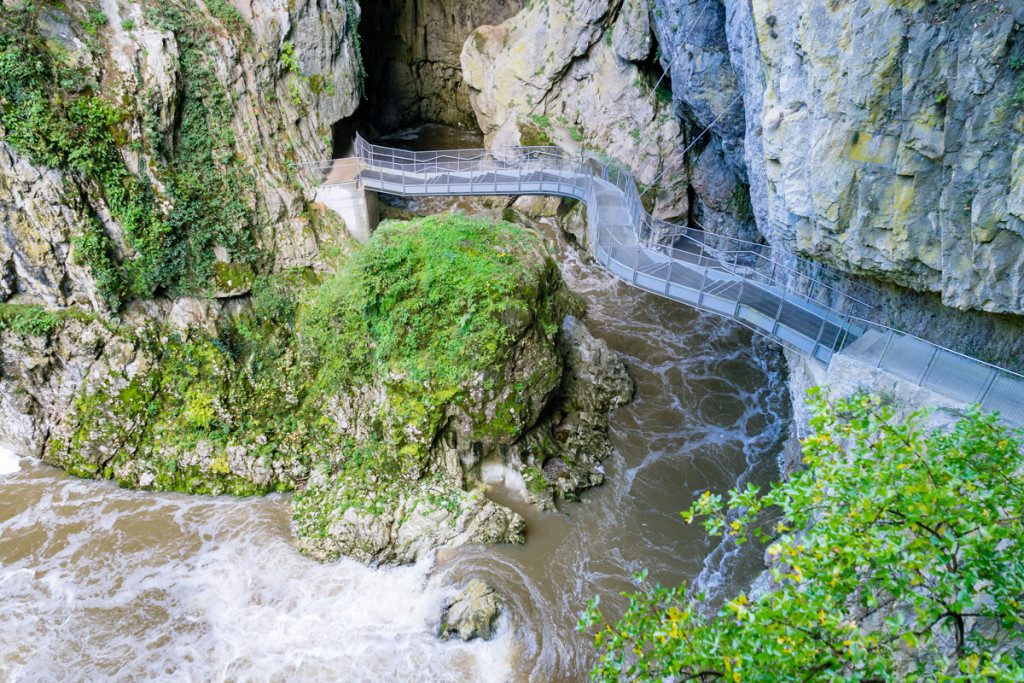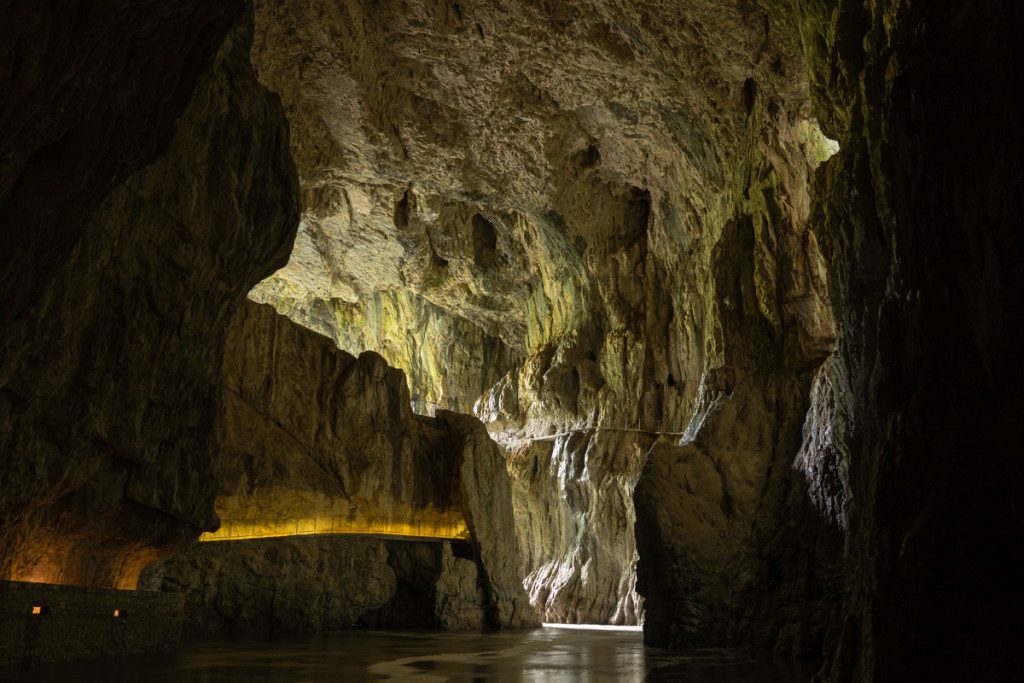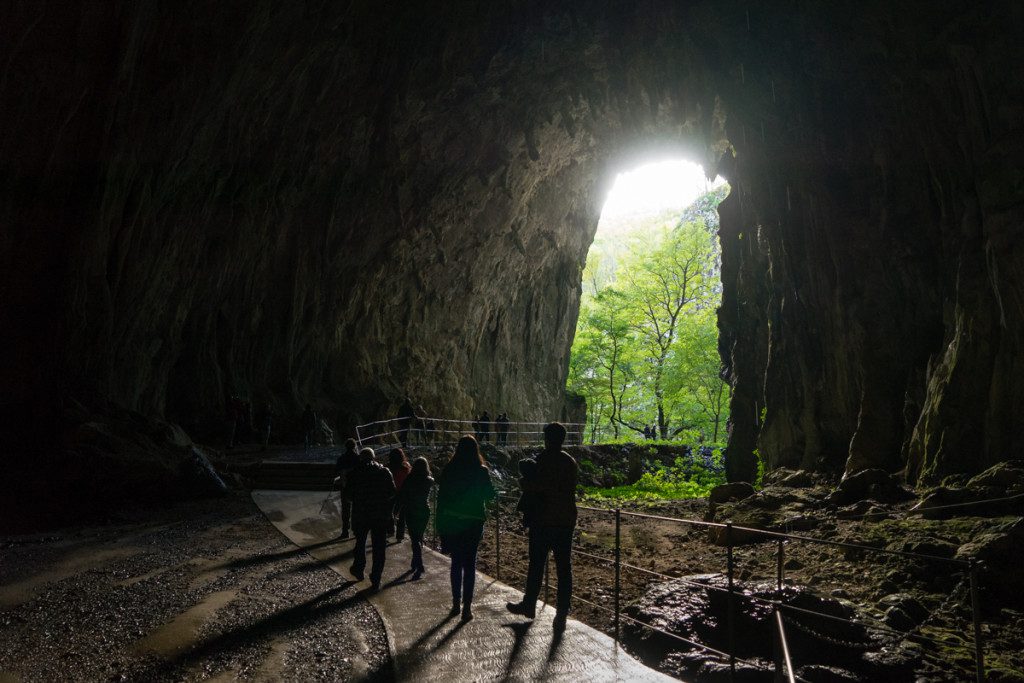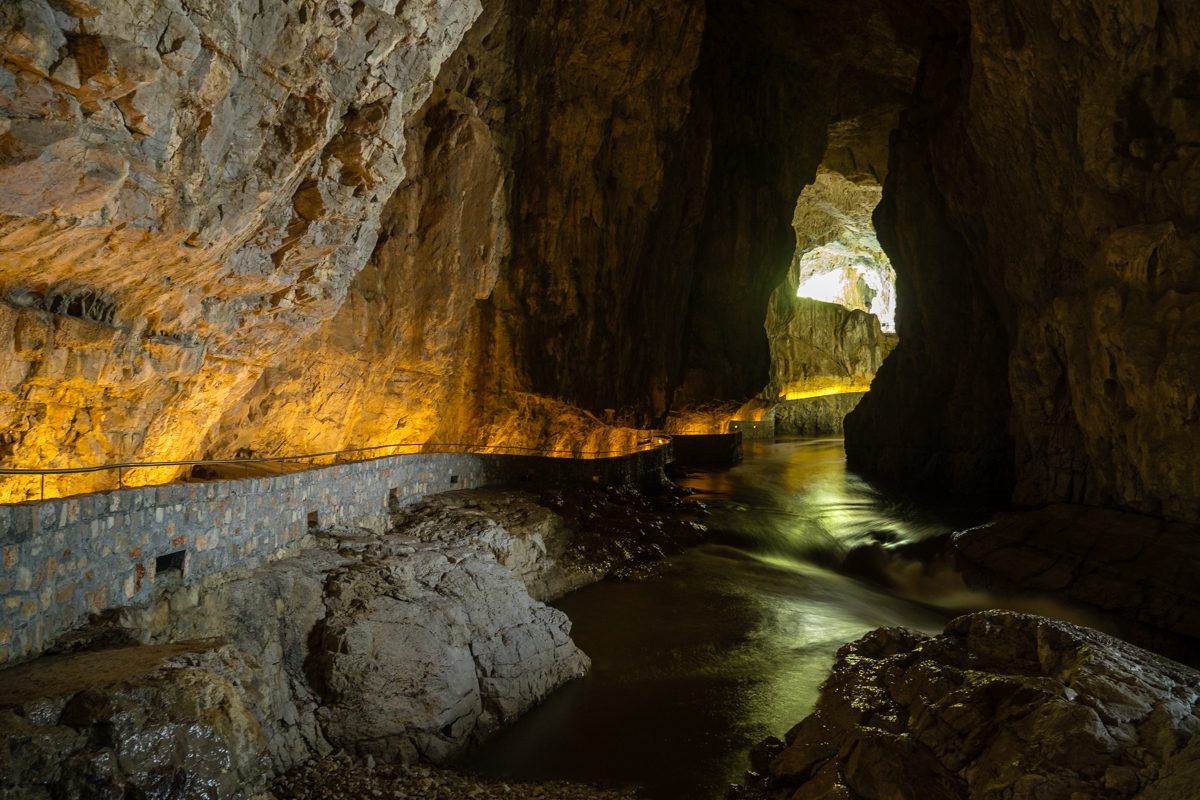Only a few days into my relaxing week in Slovenia, I got an itch to do some exploring upon hearing about a cave system that was described to me as otherworldly. Being the adventure junkie I am, I had to see if that is true.
After an hourlong bus ride out of the the capital, I found myself at the Škocjan Cave, a UNESCO World Heritage Site, in the southwestern corner of the country. This site, while well-known to anthropologists and geologists because of its great historical and natural value, is decidedly off the tourist path. The only other souls there the day I arrived, was a Spanish high school tour group, a British couple, a French couple, and some Slovenes — nothing like the more well-known, smaller, and touristy Postojna Cave an hour from here. (There is a hokie electric train that chugs tourists through that cave, adventure not included – no thanks.)
Subterranean Wonderland
Once our merry band of explorers form up into a nebulous mass behind our tour guide, a cheerful middle-aged woman from Ljubljana, we leave the visitor center while she relates the geological conditions that formed this most impressive of natural wonders.
The Reka River which flows from the Slovenian highlands to the Mediterranean across the border with Italy, runs throughout the cave system. Upstream it flows over an impermeable stone formation before reaching the softer Karst limestones that make up the Škocjan area. It is here that millennia of rushing water eroded a path underneath the harder stone and the river became subterranean.

We hike along a gravel path, weaving through subsidence dolines, great depressions in the earth caused by rainwater dissolving away lower layers, much like how the caves were formed. After a short walk, we pass through a sturdy steel door secured by a massive padlock to dissuade unguided tourists from venturing farther.
Beyond this we quickly lose elevation as a great maw in the rock appears ahead. The first cave we enter is the Mahorčič, centered directly below the town of Škocjan. The entrance is so large because about 10,000 years ago, the section through which we just entered, collapsed leaving a massive depression and dropping the floor over 100 meters. Very reassuring!
We descend farther down into the cavern watching the river flow swiftly by. All the paths and lighting are made to waterproof standards as they regularly flood because of a bottleneck at the end of the largest cave deeper in the system. In fact, most of the major footbridges have been knocked down over the years, including ones some 30 meters or more above the river’s normal height!
Downward Spiral
With each twist and turn, the light shining through cracks and windows in the upper walls dances across the river below. The path is well-lit and gives a reverent air to the space surrounding us. We travel ever downward, exiting the first section of the tour into the epic Big Collapse Doline. The name fits as we stare straight up vertical walls 165 meters tall. Passing around the circumference of the great space we reach the funicular railway that takes us back to the visitor center.

The second tour follows the more traditional path through the most specatular sections of the underground splendor. We begin once again at the visitor center but head off in the opposite direction to a manmade entrance burrowed into an underground cavern. Discovered during excavations in 1933, this forms the oldest level found to date in the park.
As we wind our way deeper, the cave comes alive as hundreds of water droplets leak from across the ceiling. And with that action, come formations. We walk by the largest stalagtite I’ve ever seen in my life, the massive 250,000-year-old “Giant” who stands 15 meters tall. And the deeper we go, everywhere I turn, there are floor to ceiling columns formed over 1000’s of years. It is all completely breathtaking. No one says I word as we follow onward.

The Grand Canyon
At a depth of 70 meters, the cave begins to widen. Ahead, I can see lights off in the distance. My mind begins to struggle to comprehend the scale, as I know I’m underground, but those lights are over 120 meters away. And then just as swiftly the floor drops, at first a slight angle, then precipitously. It plummets away from our path dropping into the darkness. Stunned we move to the edge of a metal railing across the chasm.
At that moment, every inch of my vision is filled with the world’s largest underground canyon. Underneath my feet, the Reka River gushes by 146 meters below the ceiling of this artificial world. I stand and gawk, unsure of what to do next. Looking out I see old pathways carved by early explorers. I can’t imagine how they pushed ever deeper using only a chisel and sheer determination. The highest of these paths runs mere meters from the ceiling. A fall from those heights would be catastrophic.
Eventually we wrest ourselves from the railing and follow our guide across a narrow footbridge spanning the canyon. From the middle, I lean out from the edge and look straight down, then straight up. I still have to make a conscious effort to believe what I’m seeing. By this point, I’m at the rear of our group, surely slowing us down, but I had to take as much time as possible to affix the view in my head.
I later ask the guide why photography is not allowed and he tells me that the lights in said the cave would have to be left on for much longer. This increased artificial lighting introduces an environment for foreign algae to take hold. The staff and UNESCO are struggling even at the current level of lighting to keep the plague in check. (You can try and sneak a photo, but many people in my group were told to stop. I didn’t even bother having mine out for this tour.)

After a mesmerizing 2 kilometers, we reach a ramp that heads up into the light. We return once more to the Big Collapse Doline, this time exactly opposite from the prior tour. People pose for photos in front of the UNESCO monument marking the addition of this site to the heritage list in 1986, before circling the base to reach the funicular and our ride to the top.
As I wait to board the train car, I take one last look down into the abyss, and I think “yes it truly is otherworldly.”
NomadTip
Where: Divača, Slovenia
Cost: €16 for one tour or €21 for both
Stay: Vila Veselova Hostel – I loved this hostel. It was comfortable, social, well-located, and had a great staff.
Get There: The easiest way to get to the caves from Ljubljana is to take the local regional train to Divača. The journey should about 90 minutes and cost €8 one way. A shuttle bus meets most trains to take you to the cave park or you can enjoy a nice nature walk that is well-signed and takes 45 minutes.
Notes: There are two separate tours available to the public. If you have the time I highly recommend doing both. They are very different. One is the traditional tour that visits the underground canyon and spends the most time below ground. Photos are strictly prohibited on this tour. On the other path, the trail weaves in and out of the collapse dolines under the town of Skocjan. This trip is self-guided from June through September and as such, photography is much easier. I unfortunately visited in October but the guide was amenable to me taking photos. Allow 3-4 hours for both tours combined.

November 27, 2018
I was there once in 2015 as well! It’s stunning. Where did you stay?